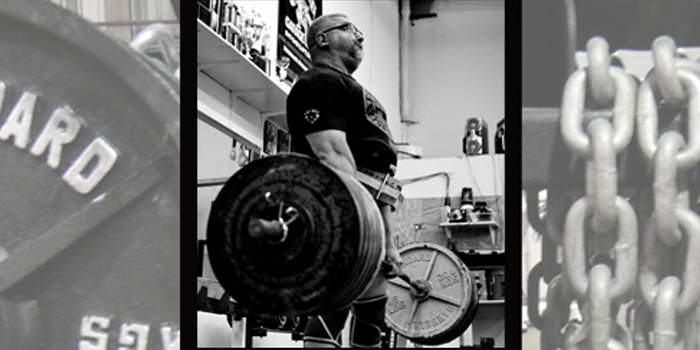
Although success at the meet ultimately comes down to the performance the powerlifter puts in while on the platform, there is really no greater responsibility at a powerlifting competition than the responsibility held by the lifter’s handler. Often times, and more so than is typically realized, the handler and his/her role during the meet transforms this individual sport into a team sport on the day of the competition.
The handler has a myriad of jobs and duties when it comes to handling their lifter at the meet. Those duties vary depending on the lifter, the lifter’s experience level, needs, and an array of other variables. For example, when I was competing on a very, very frequent level, for me personally I just needed my handler (as I was competing in gear), to help me up with my straps, wrap my knees and help adjust my bench shirt. The rest I preferred to handle myself. Having said all that, once I grew in the sport and began to lift at bigger meets, international meets, and world meets, I found myself needing more from my handlers, thus their responsibilities grew from merely helping me with my gear, to keeping track of the meet for me (this was pre-score board screen and lap tops).
I worked with my handler to go up to the expediter’s table to enter my numbers but while looking at the kilo to pound conversion chart, take a quick look at the cards on the table and see the numbers my competitors were going to take next as well as keep tabs of our sub-totals. We carefully looked over those numbers in between my attempts, not to change my numbers but to keep the mathematics fresh so should my competition miss a lift or make a lift, I would know where that put me in the mix and how conservative or risky to be with my third attempts. So there was a practical purpose for my handlers (gear, wraps, etc.) and a strategic purpose, meaning, do we go for the PRs, the win, or (if a world meet), the title. Sometimes PRs, titles, or wins are mutually exclusive outcomes.
WATCH: TOP 50 THINGS ALL HANDLERS NEED TO KNOW
When the tables were turned and when I was handling some of these same great lifters who handled me, this was often a very different story. Some of them just liked to worry about the nine attempts and wanted me to handle everything else. By everything else, I mean just that. And if handling everything else is what they need to win, then that is what I need to do as my lifter’s handler, because we are a band of powerlifting brothers.
Thus, some lifters need and or want the bare minimum from their handler, and some truly great lifters don’t even want to be handled. Yet others both new and/or seasoned need and or want their handler to handle everything besides the actual lifting of the weight and that includes being their coach, and therapist at times. So along this journey that is powerlifting, you pick up on things to do and not to do to put your lifter in best direction toward success. Thus, the following is a truly copious list of things you as a lifter’s handler should know, be aware of and be able to execute in order to give your lifter the best chance at achieving their meet goals. Supplemental to this list is the video embedded in this article, which lists some additional aspects the handler needs to know.
I am going to break this one list into three stages or times of handling. Some will over lap and some are unique to the stage they are listed within.
- Handling prior to the meet
- Handling in the warm-up room
- Handling during the meet
Whether you have handled a lifter or not, there might be something on this list that will be of value to you. If you have never handled someone at a meet or have never handled someone at a high end meet, it will definitely behoove you to peruse this list. Keep in mind, a good handler is a lifelong learner and should be constantly adding tools into their handler’s toolbox. As a handler, you can never know too much nor will you ever get too good at handling. Lastly, know that each lifter you will handle will have different needs and it is your responsibility to figure that out.
TOP 50 THINGS ALL HANDLERS NEED TO KNOW
Prior To The Meet
1. KNOW your lifter. This begins in the weight room, weeks and weeks out from the meet. As the lifter is training for the meet, you are training to enhance your knowledge of the lifter.
2. KNOW how to get them into their gear. This should be practiced during training just as if you were at a meet. How tight do they want their straps and does that vary for each attempt? Same for knee wraps: loose first wrap then crescendo up as the weight gets heavier, or crank it for all three attempts? When do they jack the shirt? Do they want it jacked at all? Know these nuances like you know them for yourself.
3. KNOW the lift-off. Practice the lift-off for the bench like you are at the meet as you will need to get off of the platform during the meet and this requires practice. You want to be certain your lifter has the best hand-off possible, and then you expeditiously exit the bench. Your bencher might be ready to break a record but if you botch the lift-off because you have not rehearsed this, as the handler you have actually worked against the goal your lifter is chasing.
4. KNOW the three-man lift off. A big 700-pound bencher might need the three-man lift off. This means you and two additional handlers. Practice it in training, and then deliver it at the meet. Know that at some meets your lift-off folks can also spot, but other meets they can’t. Some feds don’t allow your team to lift-off. This brings us to the next item…
5. KNOW the rules. It is unacceptable for your lifter to miss an attempt because you are not aware of the rules. Be familiar with all the rules so you can control those variables.
6. KNOW the goal(s) of the meet. Are you going for the win/title, a specific PRs or records? Although these can and do occur all at once, be fully aware that they can be mutually exclusive at a meet, so knowing ahead of time what your lifters wants to achieve is crucial as you will be providing them input on their attempts. Going for PRs can include greater risk than going for the win.
7. KNOW the rack heights. Do not waste 30 minutes standing in line to try to guess what your rack height should be. This is the single biggest mistake I see prior to the meet and I have seen it over and over again since my first meet in 1989. Here is the link to the information on how to measure your rack height in inches so you are not slave to trying to guess this on the fly with a rack or monolift that is not like the rack or monolift you train from at your home gym. If you are serious about knowing the single most common mistake at the meet, read this supplemental article. True students of this great sport of ours will read this and they WILL have the advantage. This is, in my mind, the cure to the most common mistake I see both lifters and handlers make.
8. KNOW what to pack. Have everything packed ahead of time. Make a list of everything the lifter needs. Remember, you can always not use something you packed, but you can never use something you didn’t pack. When I travel for a meet, my list is written on the inside of my suitcase and is in the order I want it to be packed in. If I am traveling out of state or via plane, I have on occasion mailed my gear to the location via UPS ahead of my own travel as nothing is as crippling to a geared lifter then the airline loses the luggage with your gear in it when competing at a national or world meet. UPS can track the package and that is sometimes the safer way to go. If you compete RAW, pack your backpack with your singlet, shoes, deadlift socks, and whatever else your federation allows and bring that with you on the flight as your carry-on. Other stuff you can buy there if it gets lost (food, baby powder, Gatorade, etc.).
9. KNOW how long they need to warm up. This knowledge is gained during the meet training cycle. Train like you are going to compete. Cut out the conversation and get to business. Here is a supplemental article that will detail for you how to plan your warm ups.
10. KNOW how to call their squats. Does your lifter want a down, down, down, or just an UP? Learn this during the training and make sure you are honest. If your lifter is not hitting depth during training, you can put it in the bank that they are not going to hit depth at the meet. Know how to call their squats and keep it real and keep it honest. You are only hurting your lifter by sugar coating your feedback. I can promise you that the judges will call it like they see it. They are not going to be concerned with hurt feelings.
11. KNOW their warm-ups. How your lifter warms up in training is how it should be done during the meet. Know the jumps so you can anticipate.
12. KNOW when they are looking strong. This will be crucial when choosing numbers.
13. KNOW what they look like when they are going to miss. This will be critical when choosing numbers. Know what their 95% look like so you are not choosing too big of an attempt or too light as well. Know that sweet spot so you can get the most out of an attempt without missing and having to take the weight of the second attempt. You should be learning this as the training cycle continues.
14. KNOW what weight they are capable of and are NOT capable of. The meet is not a time to experiment. Just because the lifter needs 50 pounds doesn’t mean they will get the 50 extra pounds. Better to stay inside your numbers and let the other lifter make bad number selection. A good handler should know this almost instinctually by the end of the training cycle.
15. KNOW how to control their emotions. The body cannot distinguish between physical stress and emotional stress. Keeping the emotions of your lifter under control means they are saving that energy for the platform. Yes, as a handler, you are the psychologist as well on meet day. Know your lifter's mindset. Keep them positive and keep them focused.
16. KNOW how to get them to flip the switch. Know the magic words like a neuro-linguistic programmer would that can trigger your lifter's platform aggressiveness. Better yet, know when they need this and know when to back them down too.
17. KNOW how to get them to bring it down a notch so they are not wasting energy. In between lifts is time to recharge the mental and emotional batteries for the next attempt.
18. KNOW the numbers. My personal belief is that openers are in pen, second attempts are in pencil, third attempts are based on the second attempt. Have these numbers, first and second attempts, developed over the duration of the training cycle. Even the strongest lifters can place second to a lifter who is also strong, but picked better numbers and did not miss attempts. A good handler knows their lifter’s numbers.
In The Warm-Up Room
19. KNOW the rack height in inches, get it to the head table and get to warming up. Use that same measurement in the warm-up room as to be the same level as with the training. See prior link to article above.
20. Try to find the best bar. Scour the warm-up room for the best bar for the lift your lifter will be warming up for. Sub-par bars only make the lift more difficult, make the lifter use more energy, and erode confidence. You are responsible for seeking the best bar, as your lifter should only be worrying about lifting. Most times there are an array of bars strewn about in a warm-up room. Typically there is a best of the bunch, or at worst, a lesser-of-evils bar. If you are handling a 900-pound squatter, the better bar is key as they don’t need to fight bar whip while warming up.
21. Try to find the best bench. Same reasons as for the best bar. With regard to the squat rack, I like to find the one most out of the beaten path. Not as chaotic, hot, and more warm-up time, less waiting around for the rack time.
22. Collect plates ahead of time. The devil is in the details. Find the plates. Have them ready at the warm-up rack or bench, and this means no interrupted warmups looking for a set of 10’s, for example.
23. Keep tabs of the pace of the meet. You want your lifter to be warmed up with enough time to get to the lifting area and still have time to get their head together, but not so much time as they begin to cool off. This you will have learned during training. But keeping tabs of the meet is key as a fast moving flight could mean less warm-up time. RAW meets move exponentially faster than geared meets and with the bar being on the ground, the deadlift moves much faster than the squat and bench. Internationals meets move very fast, as they have experienced loaders, and the judging tends to be tighter and less forgiving so there are more bomb-outs.
24. Keep tabs on your lifters warm ups and manage that time. This article tells you everything you need to know about managing the clock.
MORE: The Warm-Up Clock and Controlled Chaos
25. Keep your lifter hydrated. Warm-up rooms are often crowded and hot. Your lifter will be focused on the warmups and the meet. Keep their hydration close and make sure they are drinking throughout; once the cramps start, you are now in race against the time it takes for them to be all cramped up and the end of the meet, and that is never good.
26. The lifter needs only to worry about one other lifter and that is themselves. Warm-up rooms can be an intimidating place for newer lifters, or even for seasoned lifters if the warm-up room is at an international meet. Lifters traveling with their entourage all speaking a foreign language can be intimidating, especially in that no lifter flies half way around the globe to lose. Powerlifters taking the time to travel far are all the real deal and it will be critical to keep your lifter focusing on what they know, and that is their warmups, and their first and second attempts. We control what we can control. If you know how long your lifter takes to warm up and other lifters start warming up earlier, or later, stick with your game.
27. Help manage the group warming up. You don’t have to be the alpha, but you need to be someone who gets a rein on the lifters warming up. Let them know the order and keep the other handles aware too. Model behavior like spotting and loading as a warm up room that works symbiotically benefits all lifters and that means your lifter.
28. Find the best place to warm up. If there are six racks to warm-up on in the warmup room, consider, if possible, the furthest from the exit and traffic. More time for your lifter to exclusively have the rack, and fewer lifters working in possibly.
29. KNOW the kilos. Bigger meets typically have kilo plates in the warm-up room, so know how to warm up with them. This might require a cheat sheet, but nevertheless, know it.
When In The Meet
30. When something goes wrong, keep them in the game. Things will go wrong. Keep your lifter in the here and now. One misstep is not the end of the meet. The meet does not end until the final lift and if your lifter only gets their openers, perhaps the other guy/gal they are directly competing with bombs on deads. Anything can happen but if you let your lifter dwell or mentally check out, it is game over.
31. Amp them up if they need to be amped. Know what cues will help your lifter “let Johnny out of the bag.”
MORE: It's Time to Let Johnny Out of the Bag!
32. Keep your lifter focusing on their own lifts. The other lifter(s) might bomb out later, so even a missed attempt is okay because things happen in the battle. It is not always the strongest lifter that wins, but the strongest smart lifter. I am not a big fan of having my lifter watch every other lifter as they subconsciously send them energy and focus on that lifter and that drains your energy. Have them watch enough to know the pace, know the judging, but keep their energy and focus on the task at hand, and that is their next lift.
33. Keep close to your lifter. Even if you are not saying anything, keep them in your focus. Just your presence can be a calming or reinforcing factor.
34. Have all the items with you. Chalk, ammonia, mustard for cramps, water/drink, baby powder, chalk, gear, etc.
35. Know the pace of the meet. When the bar is loaded, have your lifter ready. Pay attention to the pace of the meet and where your lifter is in the rotation. Keep them aware of if they are 10 or seven or four out, all the way to when they are up so they can be prepping themselves mentally. Rushing to wrap knees or having to quickly get your mind right at the last minute is not conducive to obtaining best lifts.
36. Know when to wrap the knees. Wrap too early, feet go numb; wrap too late, that is not good either. Remember, you have one minute after the bar is loaded as well if needed (APF rules). Have an extra pair of wraps near you so if one gets away and unrolls, you can just go with the spare wrap and save precious time.
37. Get the numbers to the expediter. You are the keeper of the attempt numbers so get them to the expediter in a timely fashion.
38. KNOW your numbers. If your lifter is shooting for records, know them ahead of time and have the attempts geared toward that endgame. Watch the meet, as it is common for more than one lifter to be shooting for the same record(s).
39. Remember the paperwork. If your lifter sets a record, remember to get them the paperwork to complete and for the judges to fill out before you leave the meet.
40. Check the plates. Just prior to or as your lifter is approaching the platform, check and see if the same amount of weight is on each side of the bar. If so, is that the correct amount of weight on the bar? Are the collars tight? If your lifter is deadlifting, are the collars too tight and thus your lifter needs to spin the bar to loosen them? Baby powder from a prior lifter on the deadlift bar? Ask for a brush off. If your lifter is still gassed from the prior pull, ask for a brush off to buy them a few extra moments. No team of loaders and spotters will be 100%, so avoid your lifter having a misload and double check the plates on the bar.
41. Make sure the rack and bench height is correct. Remember, you already gave the head table the pre-tape measured rack height, but that does not mean the loaders remembered to change the height from the prior lifter to your lifter. Double check that. Benching or squatting from rack that is too high or low is equally bad.
42. Be honest. Being nice when choosing an attempt gets you nowhere. If your lifter wants a 40-pound jump and you think they have only 15 pounds in them, let them know. They get the final say. It is their meet but provide the best input based on your observations you can.
43. Mystery plates. Some lifters do not want to know the weight on the bar, so if this is the case you really need to know your lifter, what they can lift, and the jumps that are best for them. You will have to have picked good first and second attempts based on their training. The third attempts will be based on their second attempt and clearly for these types of lifters you are very much responsible for their outcome more so than in most cases.
44. KNOW where you are. Keep tabs of the sub totals of all the lifters in your lifter’s class. Not to change numbers, but to know the best numbers to use to win if possible.
45. KNOW the nuances. Know the platform. If it is tall and made with plywood/over a wood frame it will typically have a little more gave than the concrete floor in a weight room. That might mean your lifter should lower their opener. As the handler, one of your jobs is to check out the venue the day or so prior at the weigh-ins.
RELATED: It's Not Always the Strongest Lifter Who Wins
46. KNOW when to call an audible. If your lifter pulls a bad hammy for example, lower the deadlift weight for the deadlift before that portion of the meet begins. This way they can finish the meet, and who knows, someone may bomb on the deads and they still win because they are in the meet still. If you screwed up the warmups, sometimes it is better to pass on the opener, take that opener in the warmup room rather than risk an injury on the platform, then with the extra warmups completed, take your second attempt on the platform. If the second squat attempt is a complete grinder and your lifter has no chance of getting the third lift in, call the audible, pass on the third, and save that energy and avoid that risk.
47. Multiple handlers. If you have a big team, travel like a team and handle like a team. If your team is big, each lifter will have their own handler. One handler for multiple lifters is not the best model for success. Having said that, if you have a big team and they all make it to the meet, but are not directly handling an individual lifter, they should know that less is more. They are there for moral support or to go fetch something if needed, but they should stay out of the lifting area as that is sacred ground for lifters and handlers.
48. Shake the hands. Once the battle has been won (or lost), remind your lifter to shake the hands of the head judge and side judges. Your lifter will have just pulled or missed their final deadlift and they will be exhausted, so do the thinking for them and have them go to each of the three judges and shake their hands. Judging is the thankless job. In most cases you have a blink of an eye to make a call and the judge is not there to be popular or liked or unliked; they are there to call it as they see it. Your lifter does not have to respect a particular judge, nor their red lights if they flew, but your lifter sure better respect their position as the judge and demonstrate that respect for the judge and for the sport. A true powerlifting sportsman knows this but as the handler, your job is to remind them as they are still in the moment.
The included HD video includes a number of additional things that a handler must do/know in order to be an effective handler for his/her lifter. So, in actuality, the TOP 50 list is many more than 50 as you combine the written list and the video’s list. So check out this video that includes advice from some folks who have handled lifters at local meets all the way to the big world powerlifting championship meets. Included in this interview segment are:
Mike Strom:
2-Time APF Senior Nationals Powerlifting Champion (Best Lifter)
Top 50 ALL TIME American Bencher (181 &198 classes)
Shaun Kopplin:
WPC World Powerlifting Championship Competitor
1,003LB squat at 242LBS
Steve Brock:
WPC World Powerlifting Champion
1,000LB squatter
Ronald Legarreta:
IPF World Powerlifting Championship Competitor
USAPL Masters National Powerlifting Champion
Military Nationals Powerlifting Champion
Eric Maroscher:
2-Time WPC World Powerlifting Champion
WPC North American Powerlifting Champion (Best Lifter)
Owner: Monster Garage Gym, Member: Team ELITEFTS
John Ponzetti:
WPC Master World Powerlifting Champion
Now, for the powerlifter who has successfully been handled, TAKE CARE OF YOUR HANDLER. As a lifter, your handler is taking time out of their life to help you reach your goals. My personal rule of thumb is this: if someone is putting the time and energy into you so you can meet your goals, it is incumbent on you to take care of them. For me personally, that means I pay for my handlers travel, if out of state I take care of their hotel room expenses, and I choose to pay for their meals as well. It seems like common sense, but I am often surprised how often I see the handlers taking a loss for putting in the time to help their lifter become successful. That somehow just does not sit right with me. So food for thought for those lifters who are going to ask someone to be their handler.
Hopefully this article and video gives you the handler, or future handler, some handling tools for you to put into your toolbox for the work coming your way during the training cycle for your lifter. Powerlifting is an individual sport in the sense that the lifter is the one training and competing, but looking at it through a slightly different lens, it is also a team sport when you consider, the lifting team around you (if you are fortunate enough to be at a gym that has a powerlifting team).
Wishing you and your lifter the very best in all your meets.
Ever Onward!










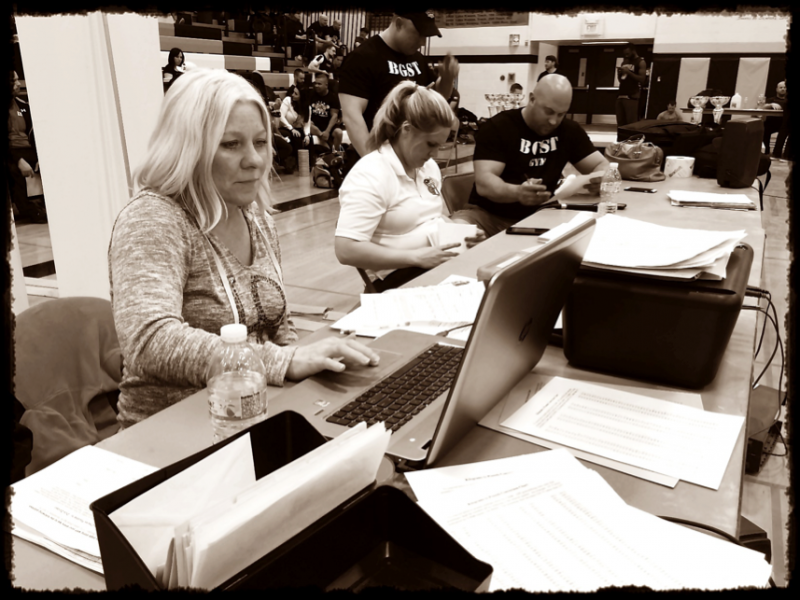
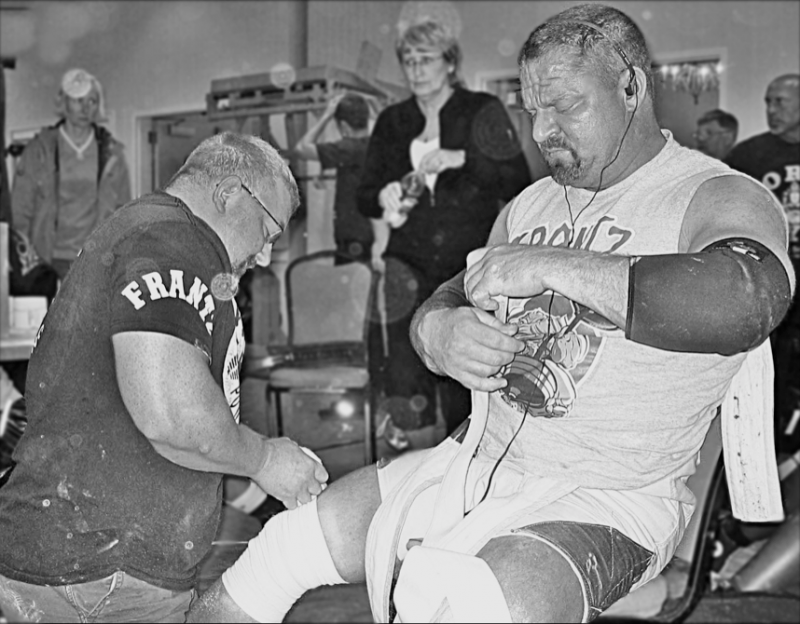
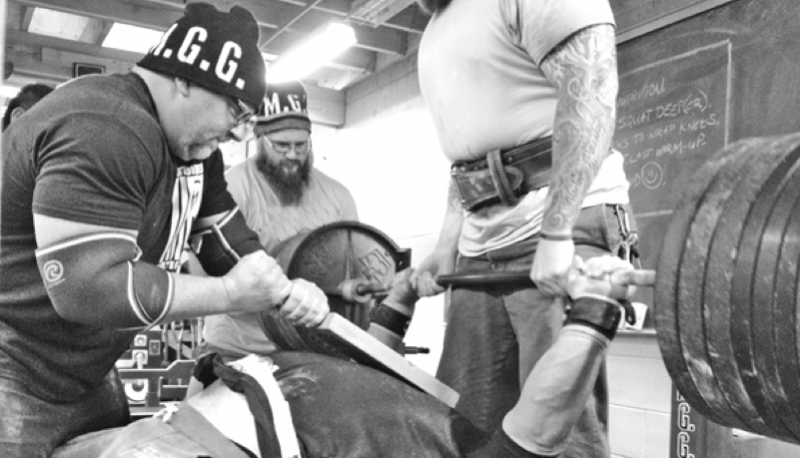
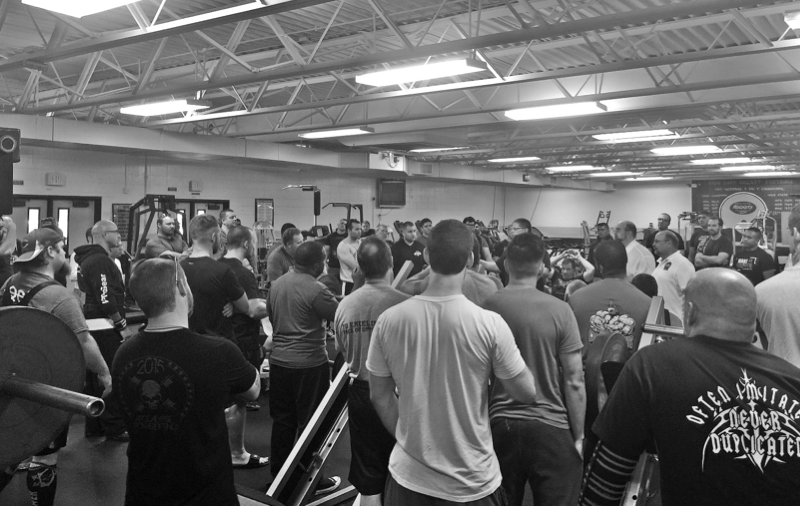
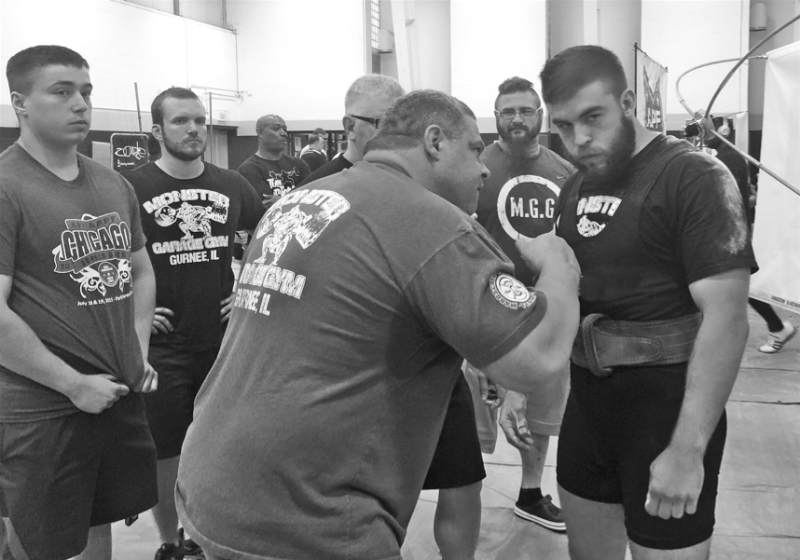
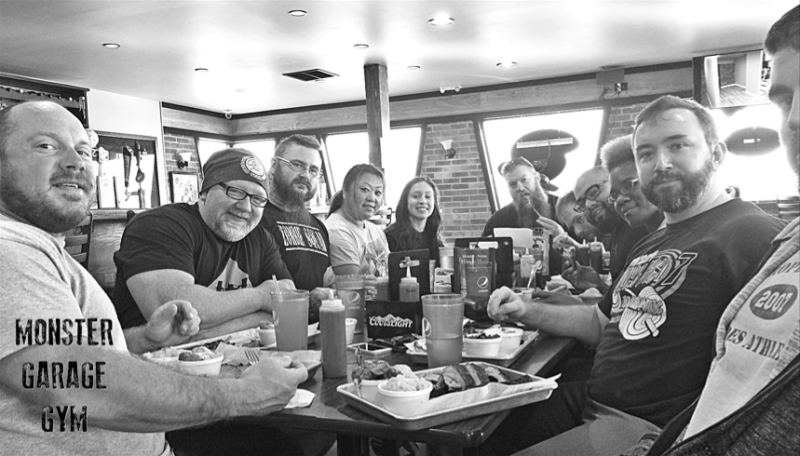
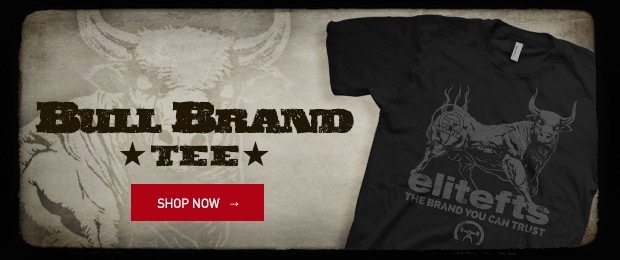
1 Comment